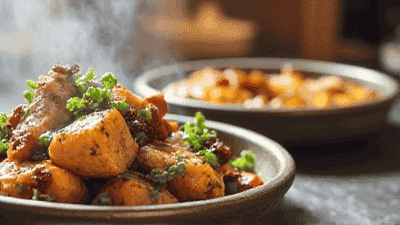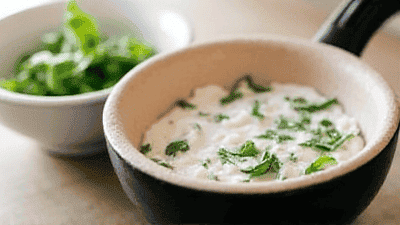
Cooking with steam is one of the healthiest methods available, allowing you to prepare vibrant, flavorful dishes while retaining essential nutrients and flavors. Steaming preserves the color, texture, and nutrients in vegetables, fish, and even some grains. As we become more conscious of our health and nutrition, learning the secrets to effective steaming can enhance our cooking repertoire while contributing to better dietary choices.
One of the most significant advantages of steaming is its ability to retain nutrients compared to other cooking methods. Steaming allows foods to cook quickly while minimizing nutrient loss. Here’s how it works:
Water Soluble Nutrients: Vitamins like vitamin C and some B vitamins are water-soluble and can leach out into cooking water. Since steaming cooks food above boiling water, this nutrient loss is greatly reduced.
Minimal Exposure: Foods don’t come into direct contact with water during steaming, further preserving vitamins and minerals.
Steaming not only conserves nutrients but also enhances the natural flavors and textures of food. The gentle heat helps retain moisture without drying out ingredients, resulting in vibrant colors and crisp textures. Steamed vegetables often have a brighter hue and a pleasant crunch compared to boiled counterparts.
Steaming is a low-fat cooking method that does not require added oils or fats. This makes it an excellent choice for those aiming to reduce calorie intake or maintain heart health. Steaming can be easily incorporated into a well-balanced diet, making it suitable for weight loss or weight management.
One of the most exciting aspects of steaming is its versatility. You can steam a wide variety of foods, including:

Stovetop steaming is one of the most common and straightforward methods. It utilizes a pot with a lid, a steaming basket, or a steamer insert.
Equipment Needed:
How to Use:
Electric steamers are specialized machines designed for steaming food efficiently. They come with multiple tiers, enabling you to cook various foods simultaneously.
Benefits:
How to Use:
Microwave steaming is a quick and convenient method that utilizes microwave-safe containers equipped with steaming lids.
Benefits:
How to Use:
Pressure cookers can also be used for steaming, particularly when cooking grains or tougher vegetables.
Benefits:
How to Use:
To ensure even cooking and optimal nutrient retention, cut your vegetables and proteins into uniform sizes. This promotes consistent steam exposure and prevents overcooking of smaller pieces while larger ones remain undercooked.
Overcooking can lead to nutrient loss and undesirable textures. Steaming times will vary based on the type and size of the food, so it’s crucial to monitor cooking closely. Use a fork or knife to check for doneness, and consider removing items from the steamer just before they’re finished, as they will continue to cook with residual heat.
Avoid overcrowding the steaming basket, as it may hinder adequate steam circulation. Cooking larger batches in smaller portions ensures every piece receives equal heat, promoting even cooking and reducing cooking time.
When steaming on the stovetop, use just enough water to create steam, typically an inch or less. Excess water can lead to nutrient loss through leaching, particularly for water-soluble vitamins.
The longer food is exposed to heat, the more nutrients it will lose. Aim for shorter steaming times while ensuring the food is fully cooked. Quick steaming typically preserves a greater amount of nutrients and flavors.
Ensure your steam cooking apparatus has a tight-fitting lid to retain steam and increase cooking efficiency. This will not only cook your food faster but also prevent nutrient loss.
While washing vegetables is essential, avoid excessive peeling or chopping before steaming. The skin of many fruits and vegetables contains a significant portion of their nutrients; leaving it on can enhance nutrient retention.
For certain vegetables, such as green beans or peas, consider giving them a quick plunge in ice water after steaming. This method, known as blanching, halts the cooking process, preserving both color and texture.

While steaming can be done with basic kitchen tools, having the right equipment can enhance your experience and outcomes. Here are some essential steaming tools to consider:
Steamer baskets come in various materials, including bamboo, metal, and silicone. They allow for even heat distribution and come in different sizes to fit your cooking pots.
An electric steamer provides a convenient and efficient way to steam larger quantities of food. Some models even feature timers and presets for various food types.
If you prefer microwave steaming, invest in quality microwave-safe containers specifically designed for steaming. Look for those with vented lids that allow steam to escape.
Pressure cookers (including electric models like the Instant Pot) are versatile and can serve as excellent steaming appliances. Look for modes specifically for steaming for optimal results.
A food thermometer can help ensure that proteins and dense vegetables are cooked to the appropriate internal temperature, enhancing food safety while maintaining texture and flavor.
Here are some easy and nutritious recipes that showcase the benefits of steaming while maximizing nutrient retention:
Ingredients:
Instructions:
Ingredients:
Instructions:
Ingredients:
Instructions:

Using insufficient water can lead to insufficient steam production, resulting in undercooked food. Always check that there is enough water to generate steam throughout the cooking time.
Overcooking steamed foods can lead to mushy textures and nutrient loss. Always monitor cooking times closely and check for doneness with a fork or knife.
Removing the lid during steaming lets steam escape and prolongs cooking time. Keep the lid securely on while steaming to maintain heat and moisture.
Inadequate cleaning or improper food preparation before steaming can lead to foodborne illnesses. Always wash your ingredients thoroughly and remove any components that may negatively affect the dish.
Steaming is a simple yet highly effective cooking method that can significantly elevate the nutritional value of your meals. By mastering the tips and techniques outlined in this guide, you’ll be able to retain nutrients while enjoying vibrant flavors and textures in your dishes.
Whether you’re steaming vegetables, fish, or dumplings, embracing this healthy cooking technique can enrich your culinary skills and contribute to your overall well-being. So, gather your steaming equipment, discover new recipes, and reap the benefits of this nutritious cooking method!